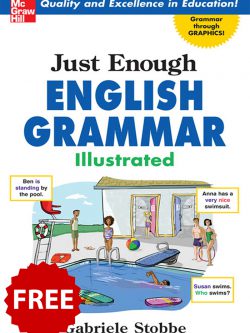Description
Good scientific writing is not a matter of life and death; it is much more serious than that. The goal of scientific research is publication. Scientists, starting as graduate students or even earlier, are measured primarily not by their dexterity in laboratory manipulations, not by their innate knowledge of either broad or narrow scientific subjects, and certainly not by their wit or charm; they are measured and become known (or remain unknown) by their publications. On a practical level, a scientist typically needs publications to get a job, obtain funding to keep doing research in that job, and gain promotion. At some institutions, publications are needed to obtain a doctorate.
A scientific experiment, no matter how spectacular the results, is not completed until the results are published. In fact, the cornerstone of the philosophy of science is based on the fundamental assumption that original research must be published; only thus can new scientific knowledge be authenticated and then
added to the existing database that we call scientific knowledge.
It is not necessary for the plumber to write about pipes, nor is it necessary for the lawyer to write about cases (except brief writing), but the research scientist, perhaps uniquely among the trades and professions, must provide a document showing what he or she did, why it was done, how it was done, and what was learned from it. The key word is reproducibility. That is what makes science and scientific writing unique.
Thus, the scientist must not only “do” science but also “write” science. Bad writing can and often does prevent or delay the publication of good science.
Unfortunately, the education of scientists is often so overwhelmingly committed to the technical aspects of science that the communication arts are neglected or ignored. In short, many good scientists are poor writers. Certainly, many scientists do not like to write. As Charles Darwin said, “A naturalist’s life would be a happy one if he had only to observe and never to write” (quoted by Trelease, 1958).
Most of today’s scientists did not have a chance to take a formal course in scientific writing. As graduate students, they learned to imitate the style and approach of their professors and previous authors. Some scientists became good writers anyway. Many, however, learned only to imitate the writing of the authors before them—with all its defects—thus establishing a system of error in perpetuity.
The main purpose of this book is to help scientists and students of the sciences in all disciplines to prepare manuscripts that will have a high probability of being accepted for publication and of being completely understood when they are published. Because the requirements of journals vary widely from discipline to discipline, and even within the same discipline, it is not possible to ofer recommendations that are universally acceptable. In this book, we present certain basic principles that are accepted in most disciplines.
Let us tell you a bit about the history of this book. The development of How to Write and Publish a Scientific Paper began many years ago, when one of us (Robert A. Day) taught a graduate seminar in scientific writing at the Institute of Microbiology at Rutgers University. It quickly became clear that graduate students in the sciences both wanted and needed practical information about writing. If a lecture was about the pros and cons of split infinitives, the students became somnolent; if it addressed how to organize data into a table, they were wide awake. Therefore, a straightforward “how to” approach was used for an article (Day 1975) based on the lecture notes. The article turned out to be surprisingly popular, and that led to the first edition of this book.
The first edition led naturally to the second edition and then to succeeding editions. Because this book is now being used in teaching programs in many colleges and universities, it seems especially desirable to keep it up to date. We thank those readers who kindly commented on previous editions, and we invite suggestions that may improve future editions. Please send suggestions and comments to Barbara Gastel at [email protected]. This edition, the eighth, is the third for which Barbara Gastel joins Robert A. Day—and the first for which Gastel is first author. Gastel remains grateful to Day for asking her to collaborate. We are delighted that our previous editions together have been translated into at least five languages, and we hope the current edition will be widely translated too.
In keeping with its title, this book has always focused primarily on writing and publishing scientific papers. It also has long provided broader advice on scientific communication. Beginning with the first edition, it has contained chapters to help readers write review papers, conference reports, and theses.
Over time, chapters were added on other topics, such as how to present a paper orally and how to prepare a poster presentation. Recent editions also included chapters on approaching a writing project, preparing a grant proposal, writing about science in English as a foreign language, communicating science to the public, and providing peer review. The current edition maintains this scope but has been substantially updated and otherwise revised. The electronic world of scientific communication has continued to evolve, and we have revised this book accordingly. Thus, for example, we now discuss using ORCID identifiers, avoiding predatory journals, and giving digital poster presentations. We have added a chapter on editing one’s own work before submission, and we now include a section on publicizing and archiving one’s paper after publication. The list of electronic resources has been expanded substantially. Cartoons have long been a popular feature of the book; we have retained favorites from previous editions and added several new cartoons by Jorge Cham (of PHD Comics), Sidney Harris, and others.
This book remains a “how-to book” or “cookbook,” focusing mainly on points of practical importance. As in past editions, the book also contains some other items, such as cartoons and examples of humorous errors, intended to lighten the reading. Readers wishing to explore topics further are encouraged to consult works noted in the text or cited as references and to look at websites mentioned in this book. Good scientific writing is indeed crucial. We hope this book will demystify writing and publishing a scientific paper and help you communicate about your work efectively, efficiently, and even enjoyably. Your success will be our greatest reward.






نقد و بررسیها
هیچ دیدگاهی برای این محصول نوشته نشده است.